Introduction, Definition, Formula, Solved Example Problems, Exercise | Mathematics - Determinants | 11th Business Mathematics and Statistics(EMS) : Chapter 1 : Matrices and Determinants
Chapter: 11th Business Mathematics and Statistics(EMS) : Chapter 1 : Matrices and Determinants
Determinants
Determinants
Introduction
The idea of a determinant was believed to be
originated from a Japanese Mathematician Seki Kowa (1683) while systematizing
the old Chinese method of solving simultaneous equations whose coefficients were
represented by calculating bamboos or sticks. Later the German Mathematician
Gottfried Wilhelm Von Leibnitz formally developed determinants. The present
vertical notation was given in 1841 by Arthur Cayley. Determinant was invented
independently by Crammer whose well known rule for solving simultaneous
equations was published in 1750.

In class X, we have studied matrices and
algebra of matrices. We have also learnt that a system of algebraic equations
can be expressed in the form of matrices. We know that the area of a triangle
with vertices (x1, y1) (x2, y2)
and (x3, y3) is

To minimize the difficulty in remembering this
type of expression, Mathematicians developed the idea of representing the
expression in determinant form and the above expression can be represented in
the form

Thus a determinant is a particular type of
expression written in a special concise form. Note that the quantities are
arranged in the form of a square between two vertical lines. This arrangement
is called a determinant.
In this chapter, we study determinants up to
order three only with real entries. Also we shall study various properties of
determinant (without proof), minors, cofactors, adjoint, inverse of a square
matrix and business applications of determinants.
We have studied matrices in the previous class.
Let us recall the basic concepts and operations on matrices.
1. Recall
Matrix
A matrix is a rectangular arrangement of
numbers in horizontal lines (rows) and vertical lines (columns). Numbers are
enclosed in square brackets or a open brackets or pair of double bars. It is
denoted by A, B, C, …

Order of a matrix

General form of a Matrix

Types of matrices
Row matrix
A matrix having only one row is called a row
matrix.

Column matrix
A matrix having only one column is called a
column matrix
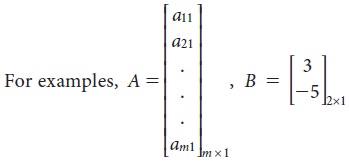
Zero matrix (or) Null matrix
If all the elements of a matrix are zero, then
it is called a zero matrix. It is represented by an English alphabet ‘O’

Square matrix
If the number of rows and number of columns of
a matrix are equal then it is called a square matrix.

Triangular matrix
A square matrix, whose elements above or below
the main diagonal (leading diagonal) are all zero is called a triangular matrix.

Diagonal matrix
A square matrix in which all the elements other
than the main diagonal elements are zero is called the diagonal matrix.

Scalar matrix
A diagonal matrix with all diagonal elements
are equal to K (a scalar) is called a scalar matrix.

Unit matrix (or) Identity matrix
A scalar matrix having each diagonal element
equal to one (unity) is called a Unit matrix.

Multiplication of a matrix by a scalar

Negative of a matrix

Equality of matrices
Two matrices A and B are said to be equal if
(i) they have the same order and (ii) their corresponding elements are equal.
Addition and subtraction of matrices
Two matrices A and B can be added,
provided both the matrices are of the same order. Their sum A+B
is obtained by adding the corresponding entries of both the matrices

Multiplication of matrices
Multiplication of two matrices is possible only
when the number of columns of the first matrix is equal to the number of rows
of the second matrix. The product of matrices A and B is obtained by
multiplying every row of matrix A with the corresponding elements of every column of matrix B element-wise and add the results.

Transpose of a matrix



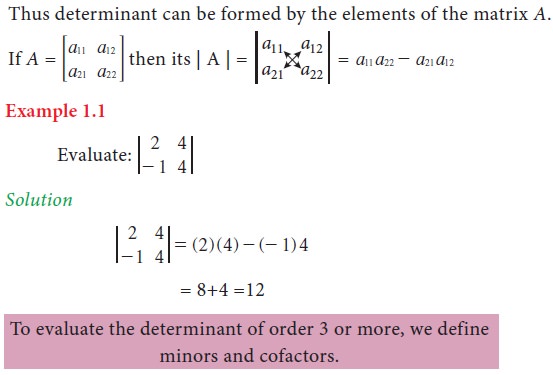
2. Minors:
Let | A | = |[aij]| be a determinant of order n. The minor of an arbitrary element aij is the determinant obtained by deleting the ith row and jth column in which the
element aij stands. The
minor of aij is denoted by
Mij.
3. Cofactors:
The cofactor is a signed minor. The cofactor of
aij is denoted by Aij and is defined as
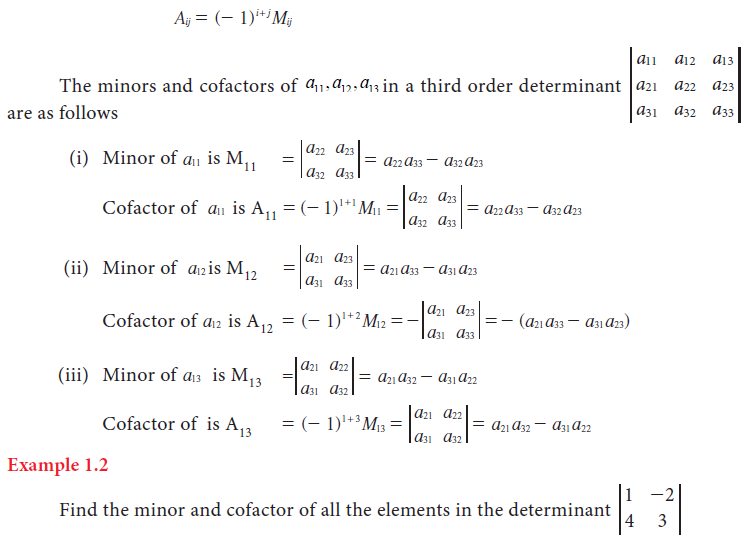
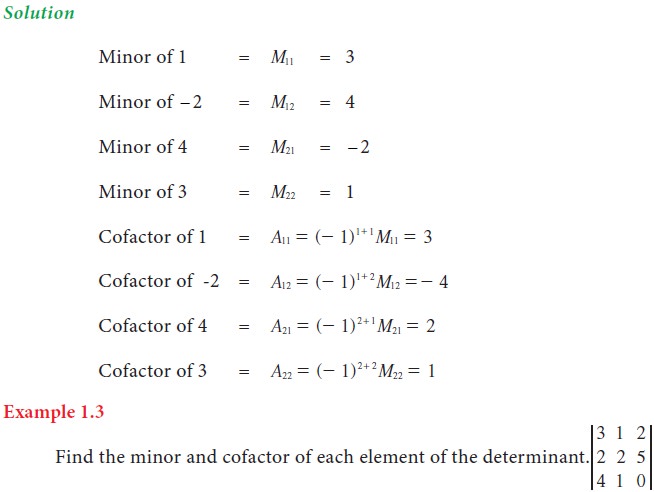
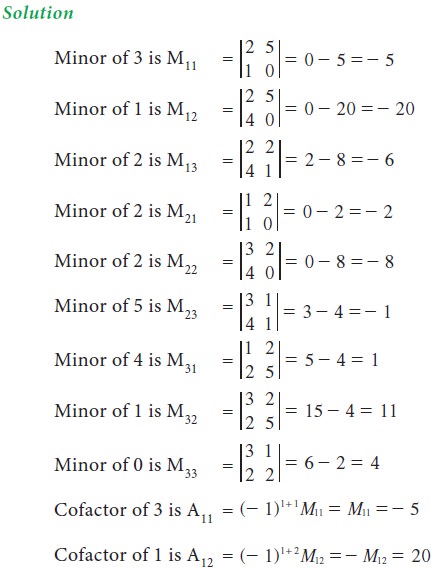
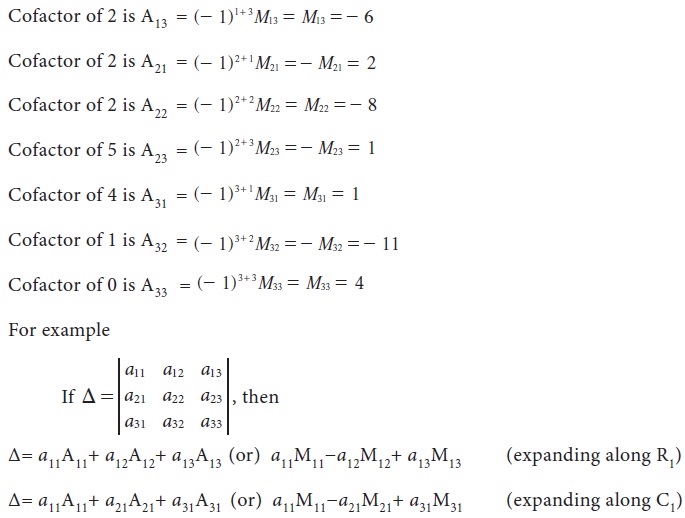
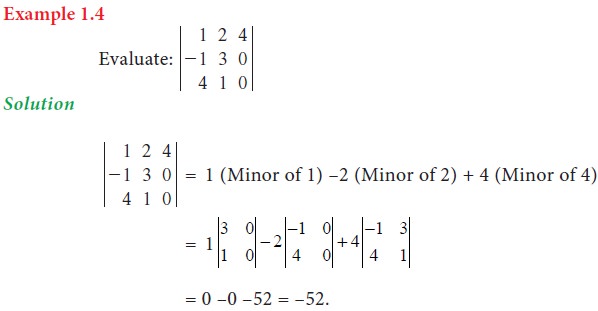
4. Properties of determinants (without proof)
1. The value of a determinant is unaltered when
its rows and columns are interchanged
2. If any two rows (columns) of a determinant
are interchanged then the value of the determinant changes only in sign.
3. If the determinant has two identical rows
(columns) then the value of the determinant is zero.
4. If all the elements in a row (column) of a
determinant are multiplied by constant k,
then the value of the determinant is multiplied by k.
5. If any two rows (columns) of a determinant
are proportional then the value of the determinant is zero.
6. If each element in a row (column) of a
determinant is expressed as the sum of two or more terms, then the determinant
can be expressed as the sum of two or more determinants of the same order.
7. The value of the determinant is unaltered
when a constant multiple of the elements of any row (column) is added to the
corresponding elements of a different row (column) in a determinant.
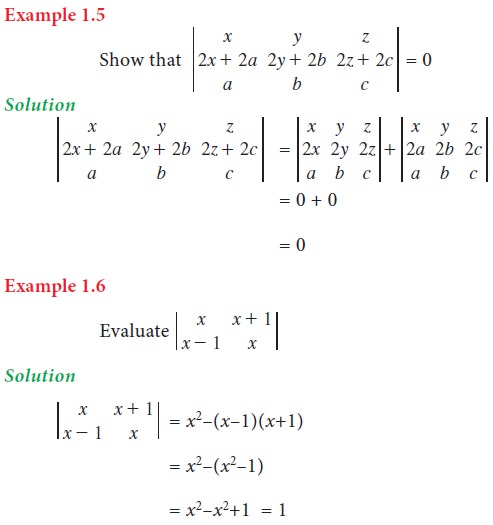
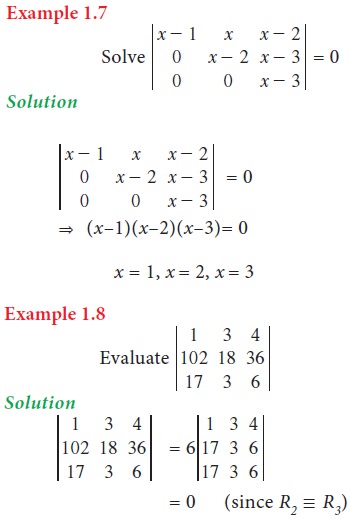
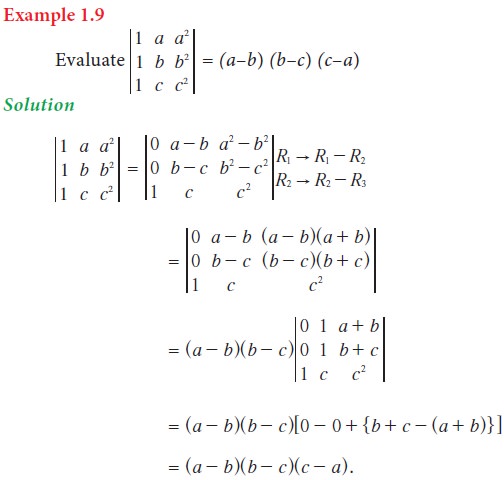
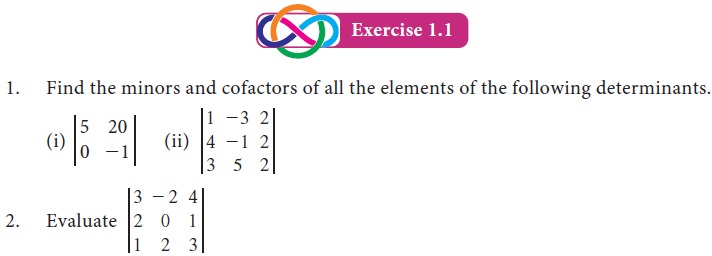

Related Topics